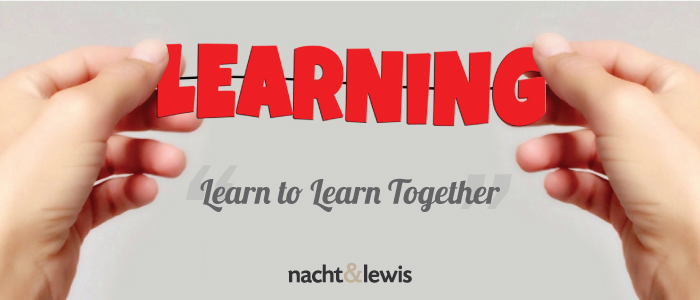With firms once again hiring, the landscape for architectural firms emerging from the recession is reminiscent of that following the recession in the early 2000’s. There has been an exodus of experienced professionals due to layoffs or by choice, many of whom will choose not to return, having found employment outside the profession. A noticeable gap in experience, seen especially with project architects in the ‘00s, is again a real possibility.
If unable to hire the qualified candidates they need, how can firms fill the experience gap? How can the profession move beyond a zero sum approach of hiring staff away from one another?
One option is to invest in learning. Attendance at seminars, in-house presentations, mentoring by more experienced staff and on-line courses typically constitutes “continuous education.” While certainly of benefit, there is an opportunity for firms to think about learning in a more robust and comprehensive way for the benefit of the firm and individuals.
In his book The Fifth Discipline, Peter Senge describes how building a “learning organization” is the way for organizations to “discover how to tap people’s commitment and capacity to learn at all levels.”
“…people continually expand their capacity to create the results they truly desire, where new and expansive patterns of thinking are nurtured…and where people are continually learning to see the whole together.”
According to Senge, learning organizations are characterized by their mastery of certain disciplines. The five that he identifies that are inherent in such organizations are:
Systems Thinking: systems are complex and dynamic; short-term actions require feedback to assess long-term effects.
Personal Mastery: seeking an elevated level of proficiency; a process of continually learning.
Mental Models: a willingness to test one’s view of the world and change it when warranted.
Building Shared Vision: clarity that fosters commitment, learning, innovation and long-term thinking.
Team Learning: harnessing the power of the team to act together and learn.
Systems theory is the foundation of Senge’s approach to the learning organization. It is systems theory which allows one to understand the whole and the interrelationship of parts. The discipline of systems thinking provides the framework into which the other four disciplines are integrated.
With the education, training and practice architects undergo, they are certainly well schooled in thinking systemically and holistically. The practice of architecture by its nature draws upon a multitude of disciplines in the design of our environment – art, engineering, history, psychology and social science to name a few. In addition, architects engage with a plethora of stakeholders on projects, managing and incorporating a diverse range of needs and desires.
With firms making the investment in hiring new employees, now is an opportune time to invest in the staff at hand as well, to do within their firms what they do for their clients in practice. By building the capacity to learn to learn together, firms may find that such an investment develops the creative and productive capabilities of their employees beyond what they thought possible.
To learn more about Peter Senge and his book, The Fifth Discipline, see: http://infed.org/mobi/peter-senge-and-the-learning-organization/





